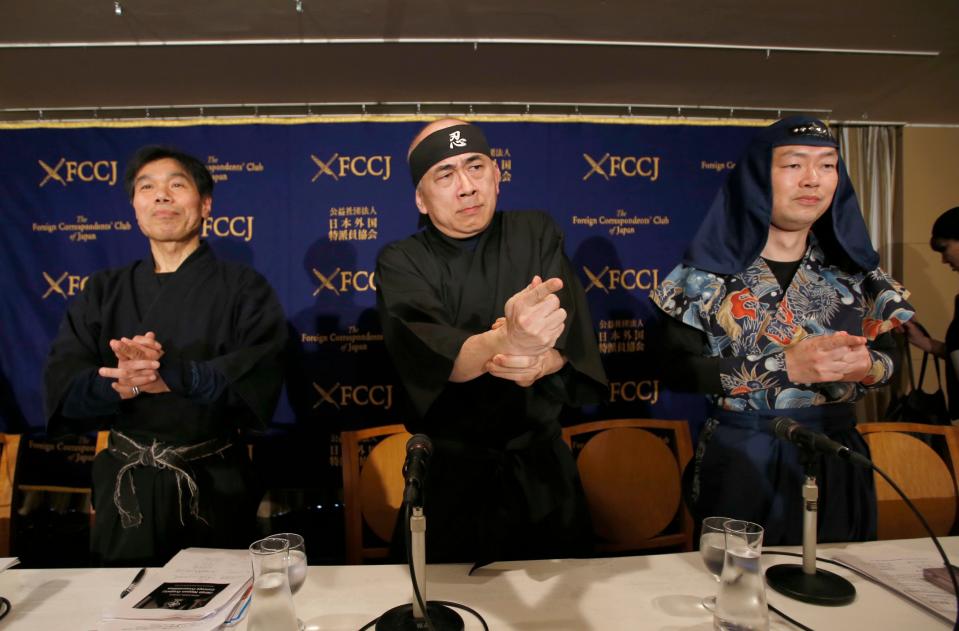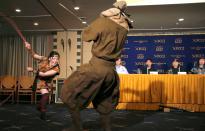'Ninja business': Japan turns to samurai-era acrobatic spies to woo tourists
Japan is turning to those hooded samurai-era acrobatic spies known as ninja to woo tourism.
The Japan Ninja Council, a government-backed organisation of scholars, tourism groups and businesses, said Wednesday that it's starting a Ninja Academy to train people in the art of ninja, and building a new museum in Tokyo devoted to ninja, set to open in 2018.
"The art of ninja is made up of various elements, such as combat, survival techniques and astronomy," Jinichi Kawakami, known as "the last ninja" and a master of the Koga ninja school, told reporters at the Foreign Correspondents' Club of Japan. "We hope this will appeal to people all over the world."
The council, set up in 2015, has created an official logo for certified products and movies to nurture what it called the "ninja business," and it hopes to educate "ninja ambassadors" to promote the culture globally.
The first certified product is an origami, or folding paper, for messages shaped like a shuriken, the star-shaped daggers that ninja throw as weapons.
Hiroshi Mizohata, council vice president, who heads the Osaka Convention & Tourism Bureau, shrugged off questions about commercialising tradition.
Dressed in a black ninja outfit, he stressed that ninja fun is good for business and potentially a big part of the government's "Cool Japan" campaign, which includes animation, video games, food and movies, especially leading up to the 2020 Tokyo Olympics.
The council put on a ninja-inspired martial-arts demonstration, in which a muscular actor used rope to ward off, choke and disarm an attacker, and a woman dressed in a mini-ninja outfit did flips to recorded rock music.
It also showed a guidebook in English highlighting several ninja-related places in Japan, such as castles where ninja had been employed, a gorge used for training by Sarutobi Sasuke, a legendary ninja, and a ninja-village theme park.
Tourism has been booming in Japan, with 24 million visitors from abroad last year, and those numbers are expected to grow.
Historically, ninja were hired by samurai as spies on enemies — hence their appearance in movies, eavesdropping from attics and summersaulting escapes from rooftops. Iga and Koga clan ninja were reputed to be the best. They have inspired countless novels, movies and cartoons, including the "Teenage Mutant Ninja Turtles."
According to the council, ninja can stare at a burning candle without blinking, frequently massage their ears to stay nimble and never gain weight above 60 kilograms (130 pounds). Their diligence and perseverance, as well as their humble acceptance of anonymity, are integral parts of Japanese culture and should become a pillar export, the council argues.
Kawakami acknowledged that real ninja training was hard to pass down today, and said that was why he is called the last real ninja. But ninja had much to offer spiritually, such as the meditative focus they muster when they clasp their hands in concentration in their trademark pose.
"It is also about respect to our ancestors," Kawakami said.

 Yahoo Sport
Yahoo Sport 














































